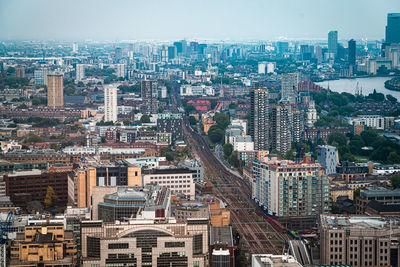According to a recent analysis, most of the municipalities that saw unrest this summer have a "torn social fabric" and have been disproportionately affected by economic hardship.
Using a "social fabric index" created by the Onwards think tank, which examines how communities are evolving across the UK, the research was released by the charitable organisation Power to Change.
It discovered that the social fabric score was significantly below the median in 23 out of the 27 locations that had disorder over the previous summer.
The UK's lowest social fabric score was found in places where violence broke out, like Hull, where three police officers were hurt and windows of a hotel used to house migrants were smashed, and Middlesbrough, where a riot of 1,000 people resulted in police attacks and the destruction of homes, cars, and public buildings.
Every year since 2020, Onwards has created the Social Fabric Index, which examines an area's economic worth by looking at factors like employment rates, relationships, and positive norms like local education levels, civic infrastructure, like trust in the government, and physical infrastructure, like local assets and green spaces.
The new report analysed the data from the index against the 27 areas that had experienced violent disorder and found the overwhelming majority of areas that experienced riots had a median social fabric index below 0.5. Only Southport, London (Westminster) and Bristol had a score at the median or slightly above.
The Power to Change report used the findings to develop 10 recommendations that call for an investment in cohesion so people have places to meet, empowering communities so they feel more control over their lives, and supporting community-led growth that can be seen and felt across the country.
Josh Westerling, the policy manager at Power to Change and the report’s lead author, welcomed the focus on community cohesion after the rioting, but said: “Communities policy must move from crisis response to a consistent strategy.”
The report calls for the implementation of the community wealth fund, plans for which were abandoned due to the elections, and to bring forward flexible funding pots of about £1.5m a place over 10 years.
It hopes this funding can help reverse the loss of spaces and places where people can meet others and interact. On average 6,000 council-owned assets had closed in 2010, according to the report, while green space provision had declined by a third when compared with the early 20th-century scenario. The report also noted the closure of 50 pubs a month in the first half of 2024.
The report also calls for the expansion of community ownership funds to £1bn over 10 years. The funds have supported over 330 community ownership projects across the UK so far, such as Stretford Public Hall, Manchester, which was bought by 800 local people and organisations after the council announced it was putting it up for sale. The hall now offers a programme of services and activities.
Westerling said: “Government should stop thinking of cohesion in isolation, and recognise it as the bedrock for empowerment and economic opportunity in places. That is why Power to Change are calling for a long-term, three-stage strategy that ties together cohesion, community empowerment, and community-led growth.”
Other recommendations include introducing community-based initiatives to increase contact between different groups of people, work towards universal fluency in English by 2030 by supporting delivery of ESOL (English for speakers of other languages) classes, introduce a community right to buy, and establish a community growth network.








.svg)




